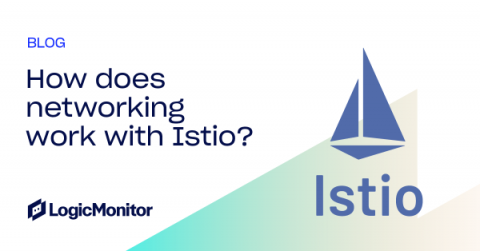Operations | Monitoring | ITSM | DevOps | Cloud
Service Mesh
The latest News and Information on Service Mesh, APIs and related technologies.
VMware Tanzu Service Mesh Named a Leader in 2023 GigaOm Radar Report on Service Mesh
GigaOm has once again placed VMware Tanzu Service Mesh within the leader ring of its Radar Report on Service Mesh. This year Tanzu Service Mesh has been upgraded to the Outperformer label, moving closer to the center and marking its heightened recognition as an industry leader. This is not only a testament to our robust enterprise capabilities and broad support for various application platforms, public clouds, and runtime environments, but also a validation of our strategic approach.
How a Service Mesh enhances EdgeComputeOps - Civo Navigate NA 2023
How Does Networking Work with Istio?
VMware Celebrates Istio's Graduation to CNCF
As we acknowledge Istio's graduation to the Cloud Native Computing Foundation (CNCF), it's important to note that it’s not just a momentous occasion for Istio, but for the entire cloud native community. This milestone marks a significant growth trajectory for Istio and paves the way for future innovation and success in the years to come. In the realm of microservices, the significance of Istio's role cannot be overstated.
Demystified Service Mesh Capabilities for Developers
Discover Unknown Service Interaction Patterns With Istio & Honeycomb
Kubernetes and the Service Mesh Era
Kubernetes is a game-changer for enterprise organizations. Automating deployment, scaling, and management of containerized applications allows organizations to embrace a cloud-native paradigm at scale and more easily employ best practices, such as microservices and DevSecOps. But as with all tech, Kubernetes has its limits. Kelsey Hightower famously tweeted that “Kubernetes is a platform for building platforms. It’s a better place to start; not the endgame.”
How to build a service mesh with Istio and Calico
Microservices are loosely coupled software that provides flexibility and scalability to a cloud environment. However, securing this open architecture from vulnerabilities and malicious actors can be challenging without a service mesh. This blog post will demonstrate how you can create an Istio and Calico integration to establish a service mesh that will manipulate HTTP traffic in the application layer.
Kubernetes and Cross-cloud Service Meshes
As today’s enterprises shift to the cloud, Kubernetes has emerged as the de facto platform for running containerized microservices. And while Kubernetes operates as a single cluster, enterprises inevitably run their applications on a complex, often confusing, architecture of multiple clusters deployed to a hybrid of multiple cloud providers and private data centers. This approach creates a lot of problems. How do your services find each other? How do they communicate securely?











